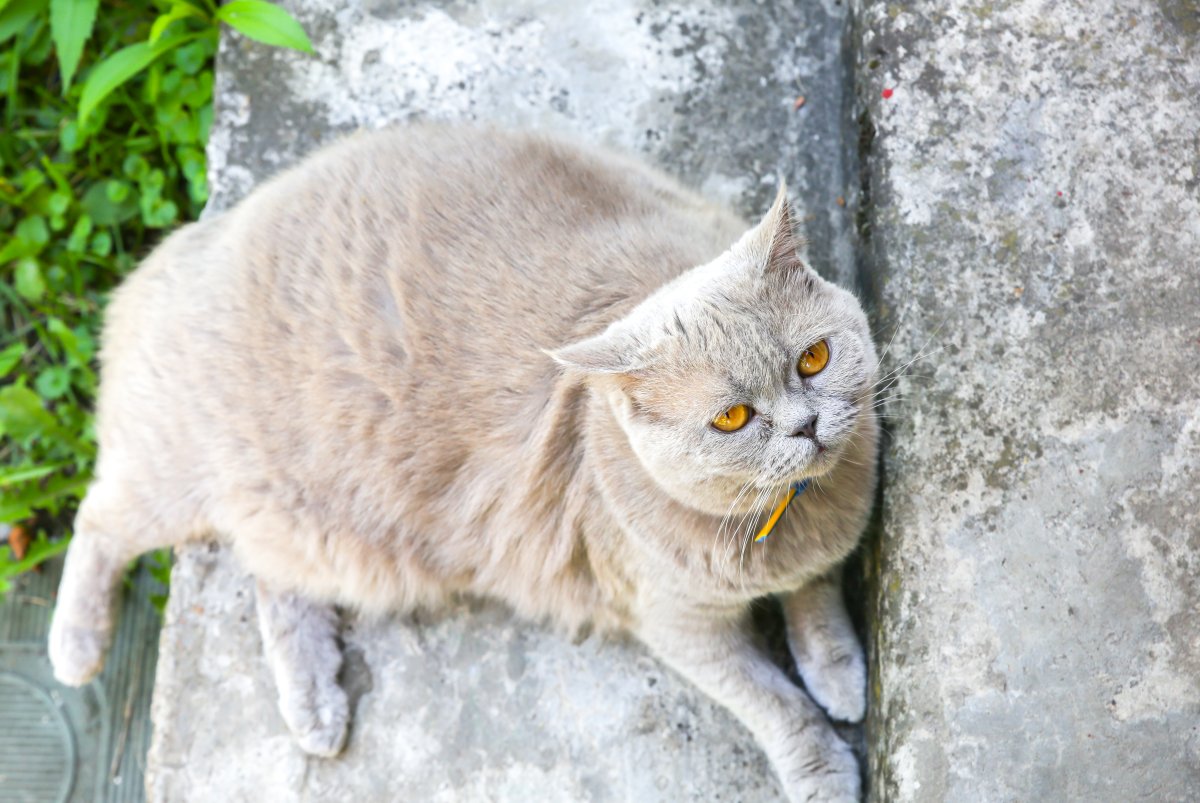There are multiple ways to remedy bad or odd behavior in kittens and even grown cats. Nonetheless, it will be effective only when you first consider your cat’s personality, nature, behavior, and preferences. However, keep in mind that such factors like personality and behavior may vary from cats to cats and breed to breed.
Common Signs of Cats’ Bad Behaviors
First and foremost, you need to understand that your cat reacting and behaving in a certain way doesn’t place her into a “bad kitty book”. Neither makes her a bad cat or a bad kitten. Such behaviors may be the cause of specific issues that directly impact your cat, including lack of time, attention and love, and so on…
Nevertheless, you can address and evaluate such behaviors in your cat through training, a little bit of observation, and course patience. The signs mentioned below indicate that your cat may be suffering from some serious behavioral issues:
- Stress
- Fear or anxiety
- Avoiding the litter box
- Spraying and urinating
- Furniture scratching
- Being aggressive towards animals and humans
- Compulsive behaviours, like biting, excessively scratching, or over-grooming
Why Do Cats Misbehave?
Cats are supposed to be enigmatic and mysterious, so evaluating the cause of certain moods and behavior in cats sometimes becomes like solving a jigsaw puzzle. To further complicate things, behavior and moods vary from cats to cats – and there is no single reason behind specific behavior.
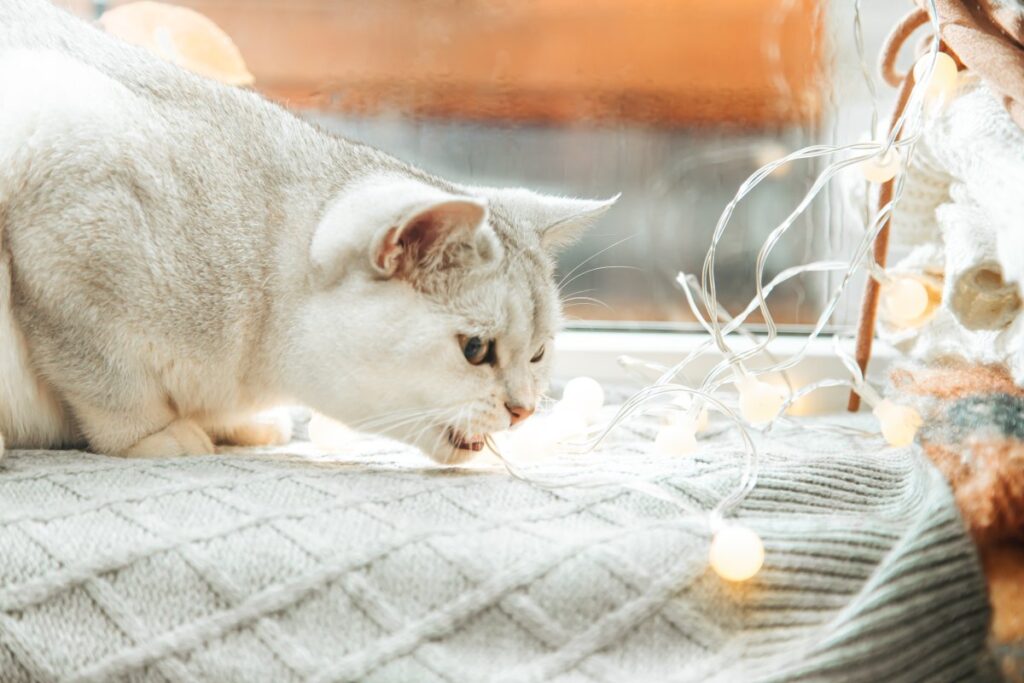
Thus, being a cat owner is not as cool as it seems since these little creatures often act weirdly from time to time and even misbehave too. Not only the random wrongdoing that is way common in cats, but consummates misbehaving as well.
However, there are these certain behaviors that you may find cute – one of such is when your cat rubs her face against yours or perhaps persistently meows to get your attention. But, not every behavior is cute; rather, some of them may be pretty annoying – like constantly biting your leg or scratching your arms.
Wondering how to get out of this situation? By discipline and bringing out the good side of your kitten. It may be a bit surprising to hear about making your cat disciplined if you never knew about this before.
Addressing Bad Behavior in Your Cat
Most of the time, you may see your cat misbehaving. However, it may be your cat just expressing its natural inhibitions like other animals or their counterparts. This is why it is not suggested to punish your cat or harm her physically.
However, at other times, your cat may just pick up an odd behavior from nowhere and start to run with the idea. Know that kittens are innocent little creatures like babies. They constantly try to understand and learn about the world around them. They try to understand humans and respond to them through positive and negative reinforcement. So, acknowledge that when your kitten starts to misbehave, it is not because she is trying to be “bad” or she is a ‘bad kitty”. However, it is simply like she is learning how to behave in certain situations.
Some helpful signs help in recognizing bad behaviors in kittens:
Although recognizing bad behavior in kittens is quite tricky, yet, there can be multiple ways by which you can get your results. Also, there can be numerous reasons why your kitty seems like a “bad kitty” – including:
- She may be anxious over a change in your home.
- You may change her place.
- She may have some serious medical conditions.
- She may be feeling lonely and needed attention.
- She is not simply considering her behaviour as “wrong”.
- She feels occupied indoors – she may want to go outside.
- She may need her counterparts.
While you may count your little kitty in the “bad kitty book”, think that she may really want you to acknowledge her issues.

Redirecting your cat’s behavior rather than punishing her or threatening her physically, more likely to put her back on track. Note that punishing your kitten won’t help, but she may feel threatened by you, and it can ultimately lead to even more bad habits and odd behaviors.
Furthermore, if your kitten is fearful of you or your family member, it may weaken your bond with her. As a result, she may never consider your commands and directions. Yet, it is significant that your kitty should be made aware of unwanted actions and behaviors. One of the effective ways of doing this is by linking bad habits with something unpleasant.
For instance, cats don’t like to get wet with water thrown at them by a spray bottle. You can simply get a spray bottle and fill it with water. Every time your cat does something unwanted, you will spray water on your cat, and she will instantly stop doing that specific action.
Your Cat Acting Bad? Bring Out The Good Side!
Cats are supposed to be way mysterious, and you can’t help but let them do their chores. However, it sometimes becomes difficult to manage specific behaviors of cats like biting, scratching, vocalization, and creating a mess all around the house.
In addition, like humans, felines also experience pleasure, hunger, fear, anxiety, and frustration – as well as many other emotions. Such bad behaviors affect their health and mental stability. They can affect the quality of life of both their owners and themselves. However, first of all, you need to evaluate why your cat is acting badly and then try to correct these behaviors with patience and consistency. Some of the bad behaviors commonly seen in cats include:
1. Vocalization
Being a cat owner, you know that you can’t sleep at peace all the time. Hence, you have finally fallen asleep, and suddenly you hear your furry buddy whistling, howling, or screaming at the top of her lungs outside your room. Thus, you feel miserably helpless as you think you can’t do anything with your cat’s odd behavior.
In addition, this particularly happens all the time. It also shows that this behavior is perhaps absolutely normal for your felines. Since these creatures are considered nocturnal, the same as their wild counterparts. Thus, cats are probably highly active at night – rather than in a day, while you’re off to bed and try to sleep at peace after the long day of work. Although, it perhaps be a sign that something is wrong outside. Reasons for this particular behavior are mentioned below:
Reasons For Vocalization And To Cure This Behavior!
- Your furry buddy may be feeling bored in the middle of the night.
- Howling or screaming can be a symbol of senility in grown cats.
- A cats’ breed recognized as “Siamese” is naturally pretty vocal than others and supposed to make loud and noisy voices at night to get your attention.
- However, know that if your cat is making noises the day long then it may be a sign of pain or any inconvenience for your cat.
- Also, cats that cry at the time of elimination in the litter box may have been experiencing pain or discomfort while trying to defecate or urinate.
- Crying, screaming, howling, or meowing during a day for no obvious reason simply be attention-seeking behavior.
Know that cats are affectionate animals that love attention, care, and affection and want their owners to reciprocate the same. So if your cat is acting oddly, it doesn’t make it on the list of “bad kitty book club”. It just shows that your buddy loves you and wants to be loved back.
2. Scratching And Clawing
Cats are predators by nature; thus, they like to mark their territory as much as they get chances. Hence, for this purpose, cats usually start scratching objects. And this is considered as the common and expected behavior in cats. Also, scratching is what cats do to keep their claws in a good and healthy condition.
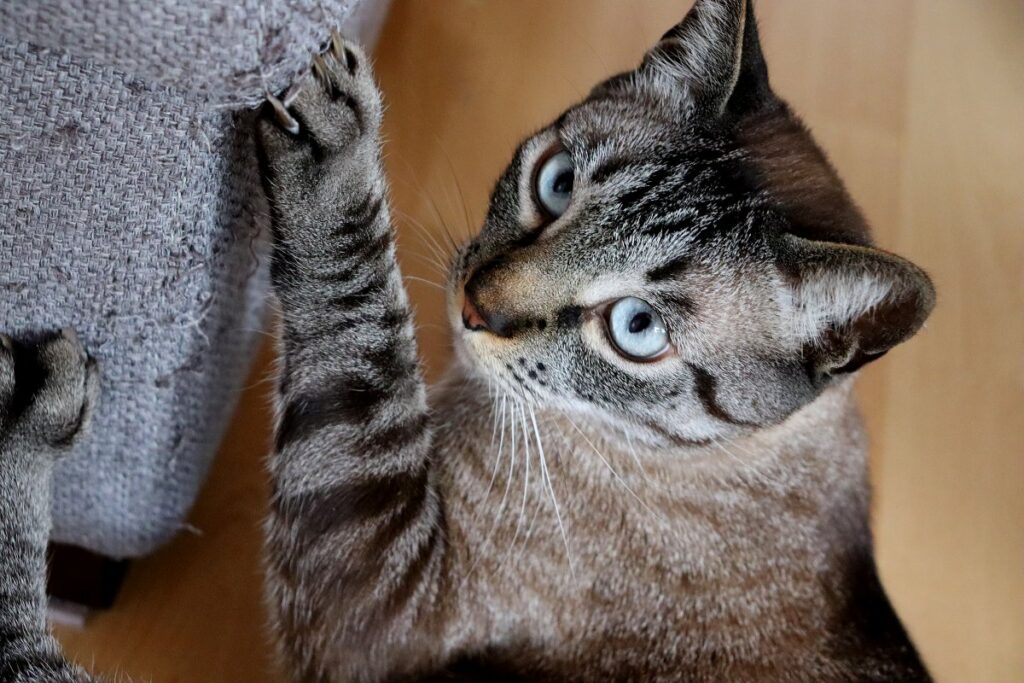
So what should you do to make your cat refrain from doing so? You can’t really do anything, as your cat naturally is supposed to do so. A healthy and beneficial trick is to redirect your cat’s behavior from home objects and furniture to appropriate surfaces provides them with scratching spots. Consider providing your cat with scratching spots and toys that your buddy can dig its claws into and keep sharpened.
- Provide your cat with a scratching spot.
- Give her toys that she can gig her claws into.
- Try to keep her busy in highly engaging games.
However, if your cat seems to continue scratching that particular object rather than scratching the spot, then make sure to cover the item with plastic. Your clumsy furry buddy will likely switch to the scratching post eventually.
3. Aggression and Fighting
Being a cat owner, you better have an idea that these creatures sometimes may hide and attempt to jump on anything that moves (of course, she doesn’t care if it is you who is walking around). Even though your cat is perhaps just practicing capturing birds, small animals, or prey – she might become extensively exuberant. Your cat won’t even refrain from using her teeth and claws to show her aggression and anger in such a condition.
One of the effective ways to limit such unwanted behaviors is to provide your feline with many activities and physical games. They can effectively enable your cat to focus and use her energy on the right and appropriate objects. You may consider engaging her in a game like playing prey.
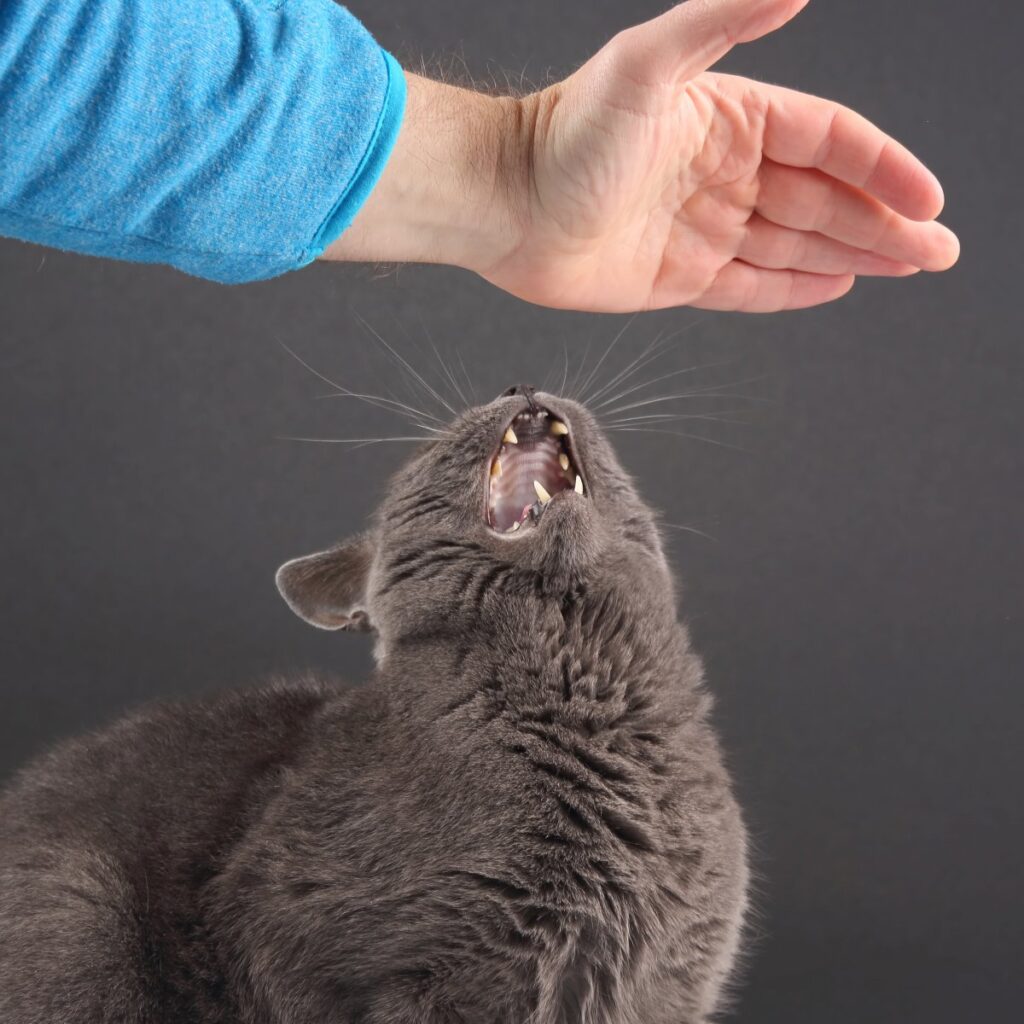
Make sure to avoid aggressive games and exercises, avoid playing aggressively and violently with your furry buddy. Also, never opt to physically punish or harm her for any unusual behavior. Know that if you try to hurt or punish your furry buddy physically, it would only serve to reinforce it eventually.
Instead, try using other beneficial tricks and techniques like giving your feline a few engaging toys that are interactive and fluctuating.
Such toys may include hanging toys or electronic toys that your furry can bat or perhaps a few jingling balls to chase.
What To Do To Avoid Aggressive Behavior In Your Cat?
Your cat may act aggressively towards all of you, your family members, or other pets in your home. Also, cats often act aggressively and violently when they have to live with multiple cats under the same roof. Therefore, it is essential to provide each feline, either a kitty or a grown cat, with appropriate own personal space in the home.
- Provide enough separate space for cats.
- Provide one-on-one attention and care to each cat.
- Make them rest and chill at their favorite spots in the house.
- Make sure to separate feeding areas and litter pans, it will help keep your cats calm and relaxed.
- Try to spend 20 minutes in a day entirely with your cat.
- Show her affection, love and care.
- Try to play with her actively for at least 20 to 25 minutes a day.
- If you have multiple cats and get aggressive towards each other, try to keep them in separate rooms with closed doors. You can use this trick for a limited time period maybe for 4 to 6 weeks and then try reintroducing them to each other. You will have to make the process successful slowly and gradually.
- In addition, ensuring switching the feline’s room several times will help each cat become acclimated to the other’s odor.
- Try switching their food bowls and sleeping spots as well.
- Give your cat an adequate amount of time to get familiar with each other’s presence and start living harmoniously under the same roof.
4. Rejecting the Litter Box
Does your cat seem to use multiple areas other than the litter box? Or does your cat just convert a space in the house to a litter box and start using it as an indoor bathroom? Various effective ways can help to redirect such unwanted behaviors. However, make sure that the litter box is all cleaned. Some felines are naturally cleaner and might refuse to use a particular litter box if it’s not up to their hygiene standards.
To keep the litter box clean, make sure to wash the litter box every week with any mild soap and clean the soiled litter daily. Don’t ever use bleach, as it may harm your cats afterward. A pro tip to consider is having more than one or multiple litter boxes for your cat. It is highly suggested if you have more than one cat in your home. Keep extra litter boxes out of the reach of your cats so that you can make them use them at the right time or when needed the most.
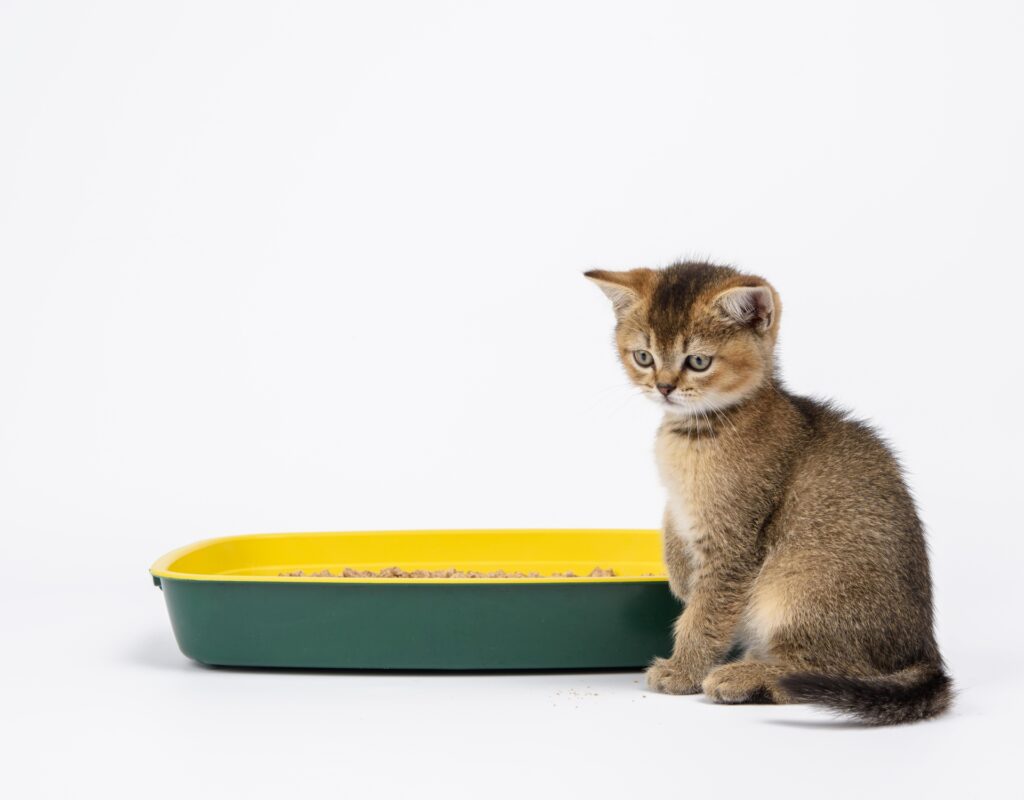
What To Do To Make Your Cat Use Only The Litter Box?
If your furry buddy still refuses to use her litter box and use random areas, don’t ever attempt to punish or harm her physically. It will lead to increasing her stress and may make the issue more complicated eventually. Instead, wash and clean the affected area with any available products containing enzymes to efficiently break down the foul smell and stain.
- Never use ammonia-based cleaning products to wash the area, as it might smell the same as the cat’s urine. Also, a certain smell might encourage your cat to return to the spot and use it.
- Try to evaluate the health condition of your cat as it is pretty possible that a certain health issue may be behind such bad behavior.
- Know that a grown cat might not be physically able to jump into the litter box. If so is the case, make sure to switch to a pan that you can easily buy from pet stores at a cheap rate.
- Make sure that the pan is way shallower than the previously used litter box.
- You might have to change it on a daily basis, still, that is a proficient and effective trade-off for your cat’s good litter box behavior.
- If you are suffering from a condition of your cat urinating more frequently than usual or she strains to urinate, then this may cause by some sort of urinary infection in your cat.
- Cats with thyroid, kidney, or liver complications often urine frequently than normal.
Be aware that your cat may be refusing to use the litter box because she is not feeling well or may have severe health issues with her that you don’t actually recognize yet. Try consulting to vet and let him examine your cat’s health conditions.
5. Biting or Chewing
You may see your cat try to bite your leg or arm. Or perhaps chew the home stuff. Cats often bite or chew anything that they may find interesting, alarming, or threatening. However, cats also bite when angry or frustrated.
Hence, it is essential to never try to tease your furry buddy to the point where she feels irritated or frustrated, and to show anger, she may start biting you. However, if you observe your cat start biting from nowhere and you can’t see any apparent reason behind it, it might be because of some health issues or a medical condition. She might start biting you or chewing objects because of the pain or any discomfort she’s going through currently.
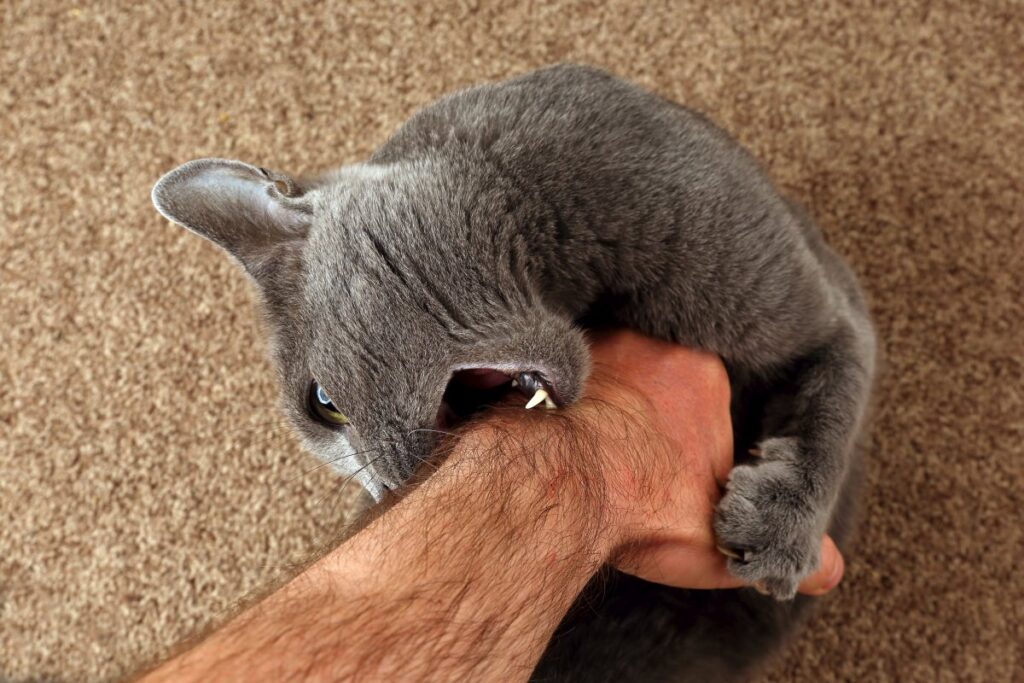
Whatever the reason behind such behavior, a cat usually gives enough warning signals before she really bites her owner. If you observe your cat is hissing, then it is time to back away and let her calm herself for a while.
How To Stop Your Cat From Continuing This Behavior?
If your fluffy buddy is not biting because of an illness or injury, make sure to observe other expected factors first:
- You can start training your cat to not bite or chew stuff.
- Don’t ever play fighting games with your cat as it encourages violent behavior in cats.
- Your cat may attempt to attack both your and other pets (if any) in your home eventually.
- Cats love to chase – let your cat play with an electronic toy that she can chase.
- Reward your cat with some treat after she wins the game (catches the toy), to encourage good morals.
- If you find your cat nipping at your during the game, stop the game and walk away.
If your cat still behaves in a certain bizarre manner, don’t harm it physically. Rather, make an appointment and go to the vet to consult things effectively. The vet will help you manage your cat’s moods and behaviors efficiently.
Ways To Discipline Your Cat!
Being a cat owner, you must have been fed up with all of your cat’s antics. Before starting working on “how’s”, make sure to evaluate “why” behind your cat’s specific actions. Only then will you be able to efficiently work on making your cat disciplined.
Below are some of the effective ways that you can consider to make your cat understand what she is not supposed to do at all. Thus, when your cat starts acting like a cat from the “bad kitty book club”, try considering the following ways to make her understand goods and bad.
1. Use Voice
If your furry buddy starts doing something that you don’t want her to do, you can use your voice to stop them. Whenever you see your cat acting bad or in an intolerable zone, try using your voice to divert her attention from doing so. Using your voice in a particular manner will make your cat understand that you notice her behavior and want her to stop doing that. However, make sure that you don’t use any lengthy phrases or words. Rather, a simple “no”, “hey”, or “stop” in a firm, loud voice will get the job done all successfully.
Note that the key to making this technique work is consistency. You need to stick to the word for enough amount of time period so that your cat remembers and recognizes words, voices, and tone and can associate particular words with bad or unwanted behaviors.
2. Use Noisy Cans
If you struggle with making your cat understand that she shouldn’t climb on top of cabinets, tables, or other parts of the home, then don’t fret anymore. You can use noisy cans to make your feline buddy understand that she has to stop doing so now. This one is a considerably very beneficial technique for felines that don’t pay attention to your commands and instructions.
You can also use a noisy can to stop your cat from snooping around certain places that you don’t want to get ruined. Hence, the trick works especially when you want your furry buddy to stay away from furniture and household plants.
You can try another technique with the same noisy can by getting a few empty soda cans and arranging them in a sequence on top of another. Keep them in a certain place and make sure that minimal contact can cause them all to wobble. Whenever your cat tries to approach those certain places and cause those empty cans to wobble, you will see the magic. The loud noise will be way enough to make your cat remain away.
Nevertheless, make sure to repeat the same exercise 3 to 4 times more till your naughty fluffy gets the message and recognizes it. Furthermore, you may have to repeat the exercise a few times more for the highly stubborn felines.
3. Clap Your Hands
Another highly effective trick that you can consider to get your feline to abstain from misbehaving or acting in a bad manner is to clap your hands. Know that cats don’t usually like loud noises around them and often get irritated. Such a loud and sudden noise coming from clapping your hands would be way irritating for your disobedient and clumsy feline. Thus, the sound will make your cat refrain from doing that particular act. Ensure repeating clapping your hands for a while, and your cat will start associating it with what she was doing and instantly opt to stop it.
4. Use Water Spray
Cats usually don’t like to get wet. If your cat seems to act in an unhealthy or unbearable manner, try using this trick to make her stop doing so. For this purpose, you need to have a spray bottle that you may already have in your home or perhaps purchase the cheap one. Fill the bottle with water, and every time your feline buddy seems to do that she shouldn’t do at all, spray some water on her face. It is a pretty helpful technique that can make your cat refrain from an unwanted act.

Does your cat often scratch your sofa or bed? Does she climb to the kitchen counter? Are you already irritated because your furry buddy chases you all around your home and never let you do your chores? Do you have other pets like birds at your home, and your cat seems to attempt an attack on them? A water spray bottle is a very first and foremost trick that you can use to make your disobedient cat respectful and obedient. Give it a try, and you won’t regret it.
5. Use Deterrents
Some cats don’t like pepper flakes, whereas some don’t like citrus for some reason. And imagine where this puts us? At an obvious advantage. You can use such fragrances to make your cat stay away from things and objects that you don’t want her to touch or play with. In addition, there are numerous types of commercially available sprays that come with such fragrances. You can easily purchase those sprays and use them around the spots and places at your home where you don’t like to see your furry buddy.
In addition, if your fluffy friend likes to chew home items or objects, you can also find and buy some harmless sprays that will add a sour taste to such things. Thus, your cat will not like to lick or chew those objects anymore.
What Not To Do With Your Cat?
Besides a list of to-do things to bring out the good side of your furry kitty, below is the list of what not to do at all:

1. Never Harm Your Cat Physically
Is your cat acting in a bad manner? Try to train her slowly and gradually. Never punish or hurt your kitten, as it will only worsen the situation eventually. Also, your furry buddy will no longer trust you to be around you or play with you.
2. Not to Ignore Your Cat
There is a misconception that a cat misbehaving might be trying to get the owner’s attention, so leave the cat on her own. Ignoring or taking for granted such severe behaviors in cats may become hard to control afterward. Try to address and evaluate why your cat acts in a particular manner so that you can manage it accordingly.
3. No Lack Of Patience
Cats usually have many mood swings, and cat owners often find it challenging to cope with their cats’ constantly changing mood swings. Especially in such a situation where your cat acts badly or misbehave. Know that consistency and patience is the key to accomplishing your target successfully.
Final Verdict
Cats are likely to be mysterious in their nature, so addressing and evaluating the cause of certain behaviors in cats sometimes becomes difficult. If your cat acts oddly or misbehaves, first and foremost, try to assess the situation and the cause behind that and then treat your buddy accordingly.






